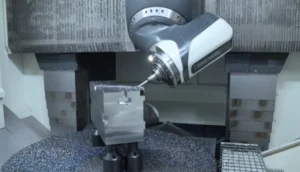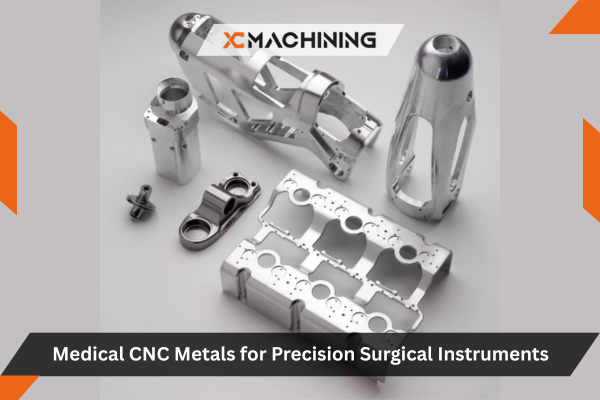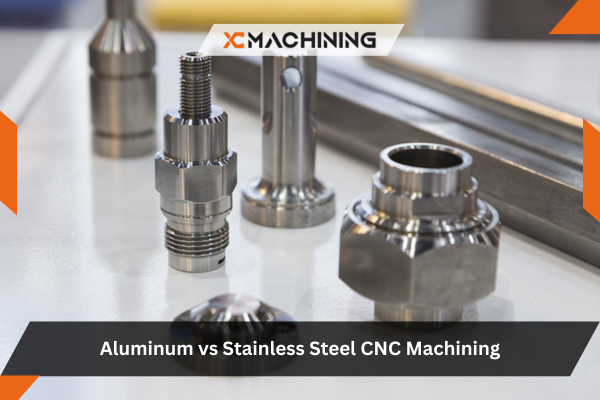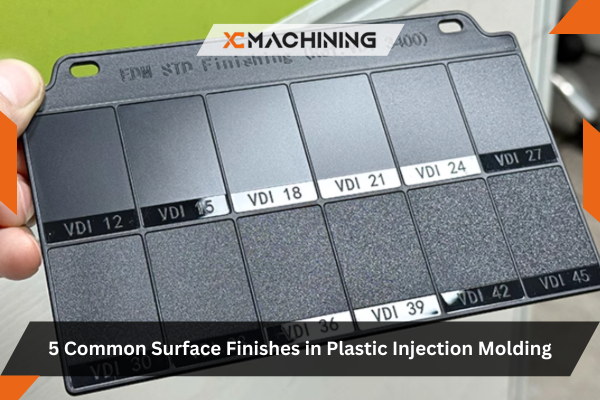The 5-axis CNC milling machine demonstrates how complex computational control can facilitate unparalleled manufacturing capabilities, and frankly, it is fascinating to watch as it moves and rotates around the axes. It is capable of handling geometries that 3-axis milling machines cannot handle, and has the degree of freedom that 3D printers are just beginning to have.
In this article, we will learn the key points of 5-axis CNC machining together.
Isn’t 3-axis enough?

CNC (Computer Numerical Control), more commonly referred to by its acronym CNC, refers to any system by which a tool head moves along a predefined path in order to perform various tasks like drilling, cutting, printing or milling.
“CNC” is often associated with CNC milling – using a spindle as its cutting head – but there is more to CNC than milling! There are various applications where CNC machining is beneficial beyond milling alone.
However, in this article, we will focus on CNC milling: the process of systematically removing material from a cutting tool to produce a final geometric shape. In this material reduction process, the computer is responsible for converting CAD designs into coordinates, which can be used by the cutting tool as instructions for where to remove material and reveal the final object.
Unlock the secrets of 5-axis CNC Machining

A 5-axis CNC milling machine is an advanced version of traditional milling machines in which its cutting tool has the freedom to move in five axes simultaneously – providing complex geometric forms the opportunity for creation.
The conventional 3-axis CNC milling machine, which is popular among enthusiasts, cannot move the cutting spindle in any way that would create partial cavities and overhangs, for example, if the material is not manually adjusted during the machining process.
Common CNC milling materials are usually plastic, metal, resin, wax, or wood. Since CNC milling machines can be equipped with almost any type of drill bit, they can also process any material that can be drilled reasonably and safely.
Due to the ability to manufacture complex parts using robust and durable materials, 5-axis CNC milling has become a common manufacturing and prototyping solution in the aerospace industry, which undoubtedly requires high-strength, complex geometries to meet demanding applications.
Beyond the third axis

Readers in the audience who like mathematics may wonder where these two additional axes come from. After all, the Cartesian coordinate system only has 3 axes – X, Y, and Z. The answer is surprisingly simple. The 5-axis CNC adds an additional rotation axis around the X and Y axes. These are called rotation axes, while the standard X, Y, and Z directions are called translation axes.
The above image shows five axes. There are indeed rotating Z axes in some machines, but in reality, 6-axis CNC milling machines are a rare breed, as the sixth axis provides little benefit outside of high-end or niche applications. However, they still exist, as these 6-axis CNC machines offer a third rotational axis.
5 axes in a 3-axis world
CNC milling machines can achieve their 5-axis capability through two mechanical methods: rotating the cutting head or moving the workbench (as well as the material block).
As the name suggests, the rotary head machine can manipulate the tool head around the material block, entering narrow spaces from different angles. This method can process larger and heavier objects because the material block remains stationary throughout the process.
On the other hand, CNC milling machines that move objects on a table (also known as trunnions) achieve an additional two axes of freedom by rotating the table on which the material is placed. The advantage of this method is speed and stability, although objects that are too large or heavy cannot be rotated in this manner.
5-axis CNC milling machine

5-axis machining is a complex but feasible technology. Some machines are specifically designed for this task and employ continuous numerical control methods. This involves constantly adjusting the cutting tool on all 5 axes to maintain optimal perpendicularity between the drill and the cutting surface.
On the other hand, some machines (such as the Haas VF-4) can be modified by adding trunnions to obtain two additional axes. This is a 3+2 axis machining method, which locks the part at a certain angle determined by the rotation axes around X and Y, while the tool head moves on the 3 axes to cut the part.
Continuous milling and 3+2 axis milling
The main advantage of continuous CNC is speed. During this process, there is no need to stop cutting to reposition the part multiple times, and a continuous 5-axis CNC can complete the work quickly. However, it is worth noting that continuously moving tool heads require more moving parts (i.e., more wear) and require more advanced collision detection.

In a 3-axis machine, gravity and fixtures work together to ensure that objects remain safe during processing. Therefore, parts should have a minimum thickness (depending on the material) to ensure that they do not break when processed from a specific direction. In order to ensure that the part is secured on the milling machine with sufficient force, tools such as hydraulic fixtures or zero-point vices are commonly used.
When using heavy cutting tools, material fragments can fly around at high speeds, making it important to ensure that the cutting head does not collide with the raw material in unexpected locations. Tracking everything in 3D space has proven to be a significant programming challenge.
The role of 5-axis CNC machine

5-axis milling can produce high-quality parts, but it is not the only method for manufacturing them
When is 5-axis machining meaningful? It is the best choice when parts need to have a certain strength, be completely hole-free, or be made from unique stock materials. In this case, even the most technologically advanced DMLS 3D printer cannot meet your needs.
5-axis CNC machining provides manufacturers with an effective means to modify existing objects with complex features that cannot be produced using 3D printers; however, 5-axis machining alone might not always provide them with an ideal solution to their dilemmas.
Limitations
This is a more complex process. Although 3D printers can be turned on and generally left alone, more time and attention are required for 5-axis CNC milling machines. This is because the blank needs to be repeatedly repositioned, the tool head needs to be calibrated and replaced, and CAM needs to be run in steps.
Its geometric capabilities are still relatively limited. Although it can achieve the most complex geometric shapes, it is more complex than a 3-axis milling machine, but still cannot achieve the same results as many 3D printers. For example, even a 5-axis CNC milling machine cannot manufacture hollow spheres from solid blanks.
Materials are wasted during the production process. Depending on the technology of the 3D printer, CNC fixture machines may waste more materials (after all, it is a subtractive manufacturing process). However, this situation can sometimes be alleviated because factory waste such as aluminum and steel can often be collected and recycled into new inventory.
Obviously, these are not enough reasons to avoid 5-axis CNC machining, but it is still best to keep this in mind when dealing with projects that can benefit from a 5-axis approach.





